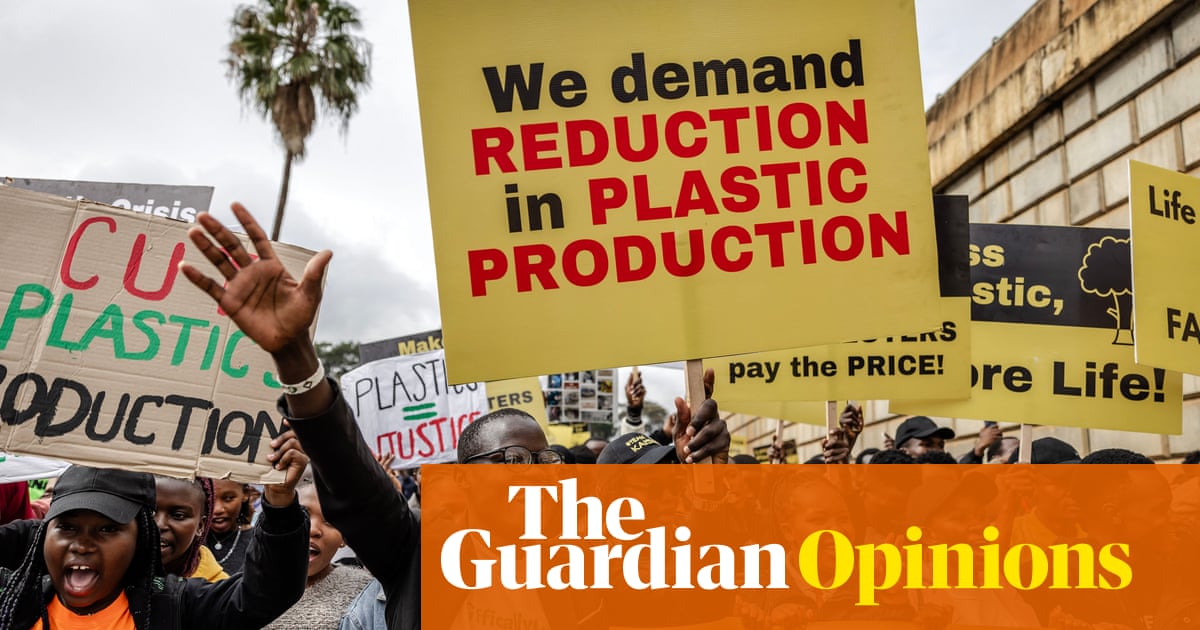Babies in the global south are being poisoned by plastic from the north. Yet they are missing from the data | Aidan Charron


For the last 70 years, we have all been lab rats in the biggest health experiment of human history, one that none of us signed up for, least of all our children.
In the run-up to attending the global plastic treaty negotiations in Nairobi, I was feeling frustrated about the coverage of microplastics and their impact on human health, so I wrote a report, Babies v Plastics. I wanted to emphasise that these tiny, insidious fragments of plastic are associated with not just one health risk, but with an entire range of health issues, from elevated miscarriage rates to early puberty.
Some chemicals used in the manufacture of plastics, known as phthalates, are associated with up to 20% higher rates of childhood cancer overall. There is evidence that microplastics can interrupt maternal-foetal communication and potentially damage DNA. They have been associated with type 2 diabetes, and even conditions such as attention deficit hyperactivity disorder (ADHD). The list goes on.
However, the public are highly unlikely to know this. They would have to scour the press for every single article out there to fully understand the scale of this involuntary mass poisoning at the hands of the unaccountable plastic industry.
Absorbing the research was unnerving but it gave me a new perspective. The research on this topic, while commendable and much-needed, exists within a strange vacuum that largely ignores one group: the children of the global south. The additive chemicals of microplastics are slowly poisoning everyone, but the research has failed to account for people of all socioeconomic and geographical backgrounds.
That is damning when you consider that between 2.14m and as much as 4m tonnes of plastic waste are shipped south from the global north every year. When China shut its doors to plastic waste in 2017, Malaysia, Ghana, Vietnam, Cambodia and the Philippines all saw an increase in the volume of plastic waste arriving at their shores. This fact seems especially galling given that we don’t include their children in our research on the health risks of exposure to microplastics.
This is borne out by the Plastic Health Map created by the independently funded Minderoo Foundation, in Australia, which illustrated that the babies being studied are largely in the global north: in countries such as Italy, the Netherlands, Denmark, UK and US.
This is not only infuriating on moral grounds but it also underestimates the science. We know that people in poorer nations are the most exposed to microplastics, as an international study led by Macquarie University in Australia, concluded last year. By leaving the babies of the south largely out of the sample groups being studied, we are ignoring the most exposed demographic and probably underestimating the subsequent health risks.
A study published in the journal Environmental Science and Technology found that each of us could be consuming as many as 52,000 microplastic particles, and potentially inhaling another 121,000 microplastic particles, a year: the equivalent of us each swallowing a large bar of soap’s worth.
It is not hard to understand how this might affect a child more than an adult, but there’s another factor, too. Babies crawl and chew on inanimate objects, which means they inhale household dust that contains microfibres, the microplastics from textiles, and they chew on plastic toys, as well as on feeding bottles.
For children in the developing world there are fewer regulations on what those toys and chewable teats might contain.
after newsletter promotion
The plastic waste that ends up moving from north to south is mostly heading for fake recycling – it will be buried in landfills or burned, often on unregulated sites. Its chemicals leach into nearby waterways and settlements. This is especially worrying because microplastics shed from waste are known to carry bacteria and viruses into the human body, as well as heavy metals.
The morally bankrupt plastic industry will claim none of this can be addressed, until we find more causal links between microplastics and health risks. Yet, lobbyists in Nairobi have just demanded that no independent science body to assess these health risks should be included in the global treaty.
What we urgently need is much more research with studies that include the babies of the global south. We already have a two-tier climate crisis with the global north producing 92% of CO2 emissions. Now we have set in motion a two-tier plastic crisis – with the global north shipping ever-increasing amounts of plastic waste to the south, to poison their children.
If we are going to effectively call out the plastic industry for this global lab experiment that none of us signed up for, we need all the facts, and that includes the damage being done to the babies of the global south, too.
Aidan Charron is director of End Plastic Initiatives at Earthday.org in Washington DC
 Print
Print




